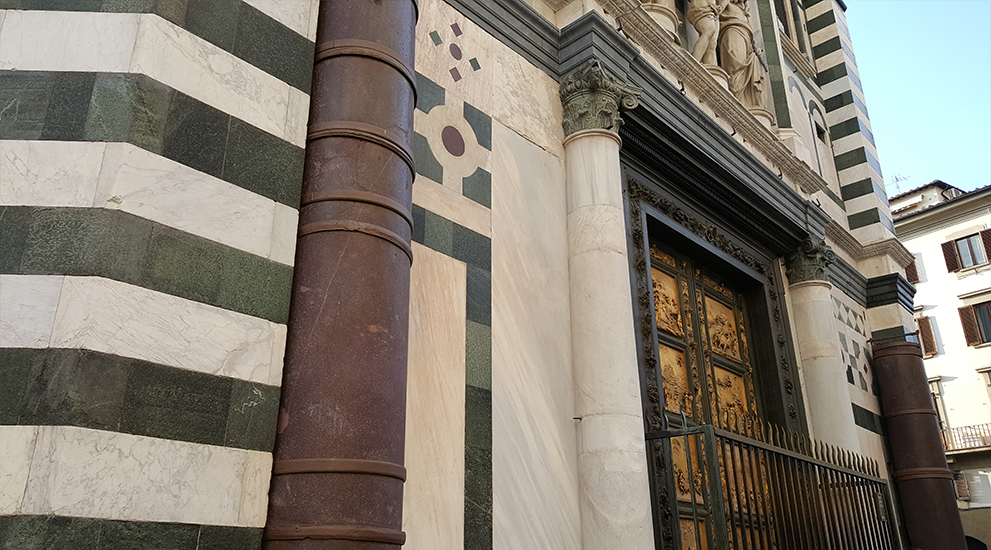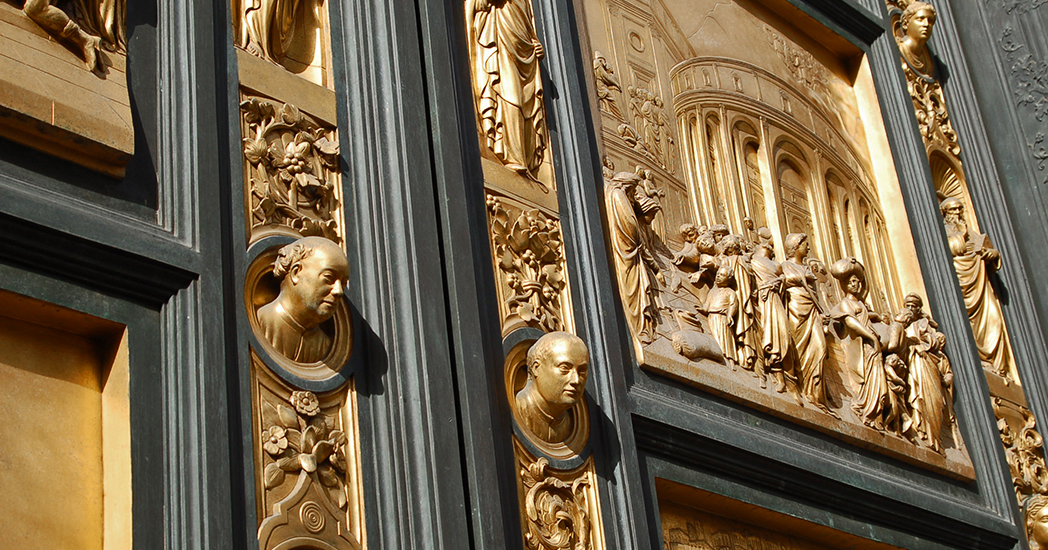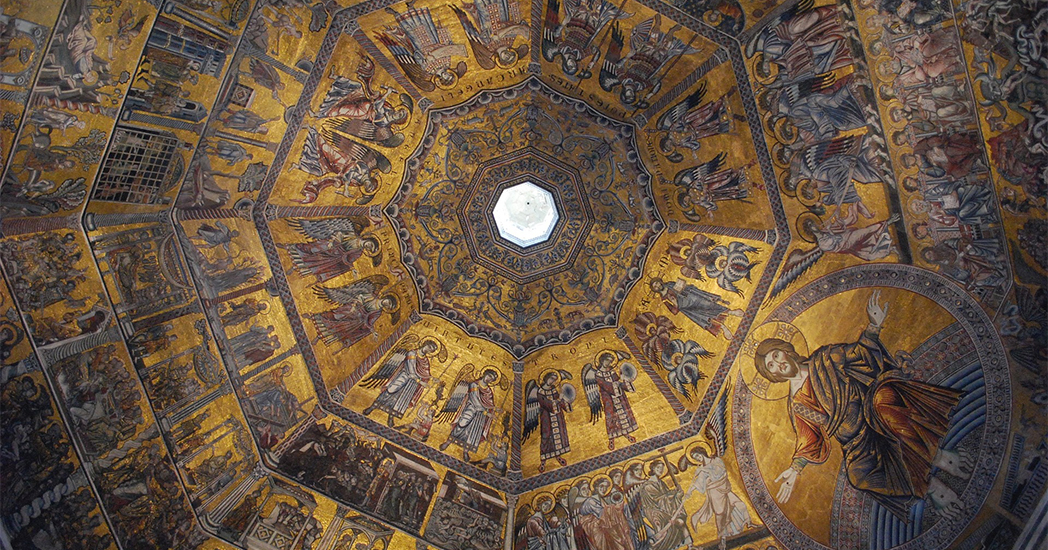
The Baptistry of San Giovanni in Florence
On June 24, Florence celebrates its patron saint, San Giovanni, but this has not always been the case. Back in the day, when the religion was still pagan, the city was devoted to the god Mars. Many believe that the current Baptistery of San Giovanni was built from the ruins of an ancient temple dedicated to the god of war. However, the origins of this building are still debated and uncertain. Some believe it to be a building from the early Christian era, others from the Middle Ages. What is certain is that in historical documents it is mentioned for the first time as a basilica in 897, while it officially becomes the baptistery of the city in 1128.
This symbolic building of the city is characterized by an octagonal plan with a diameter of 25.60 m, with a dome covered by a pyramidal roof.
On the outside it has the characteristic decoration of Florentine Romanesque architecture, with white Carrara marble and green Prato marble.
Columns and capitals are differentiated by type and color of the marble and arranged accordingly. On the sides of the eastern door there are also porphyry columns that do not seem to belong to the original project. They are a "gift" that the Pisans made to the Florentines following a brief alliance, which had seen Florence protect Pisa while the latter was engaged in a war against Saracen pirates in the Balearic Islands.
To thank the Florentines for their help, the Pisans gave the them two columns of red porphyry, part of their war booty. It was said that these shiny columns had a particular power: they could unmask thieves and traitors by reflecting their faces.
The Pisans must have thought that they were too precious a gift for the Florentines with whom they had never had a good relationship, so they decided to render the columns opaque with fire so that their rivals could not exploit their revealing power.
If between the two cities there was no good blood before, after this episode their relationship cooled further. Since then, people in Florence it became a saying: "Blind Florentines and Pisans traitors"!
Despite this, the columns
became an integral part of the building and were restored and strengthened with
iron hoops after they had been damaged by the flood of 11 April 1424.

To embellish the marble decoration there are three spectacular bronze doors recently restored, perhaps the most famous doors in the entire history of art.
The oldest, the South Door, was built between 1330 and 1336 by the sculptor Andrea Pisano. The bronze panels show episodes from the life of John the Baptist and the Christian Virtues.
On the North Door, by Lorenzo Ghiberti, there are scenes from the New Testament, the Evangelists and the four Fathers of the Church.
Finally, the east door,
known as the Porta del Paradiso (so
renamed by Michelangelo), is another
masterpiece by Ghiberti, who together with his workshop, created a decoration
different from the others, dividing it into ten large tiles.

Inside the baptistery, the attention is immediately drawn to the precious mosaic that covers the entire dome, one of the largest in the world for the time to be decorated in this way.
The large mosaic partly
represents scenes of the Last Judgment,
dominated by the huge figure of Christ the Judge and which also includes the
famous representation of Hell with the great horned Satan who devours souls.
Then there are stories from Genesis, stories of St. John the Baptist, Christ
and Joseph. Top center, are the angelic hierarchies.

Made mainly of a single block of marble is the large baptismal font, attributed to a follower of Andrea Pisano.
Inside the baptistery there were also Donatello's Magdalene and the Silver Altar, now on display at the Museo dell'Opera del Duomo.
Finally, the floor has a peculiarity: a marble slab decorated with the signs of the zodiac, on which the solar ray that filtered from the gnomic hole on the dome (now disappeared) used to fell to indicate the summer solstice. One of the many ancient instruments that mark the time in Florence.
From any angle, the Florentine Baptistery appears as an architectural masterpiece. An example of perfect geometry embellished with a rich but harmonious and well balanced decoration. It is not surprising that at the beginning of the fifteenth century, Brunelleschi chose it as an example to demonstrate his new method of representing buildings in perspective!



